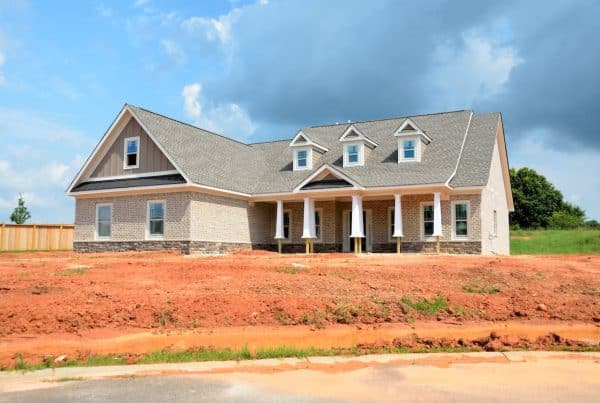The future of cities is changing. As populations continue to grow and the world becomes more connected, cities need to make room for new technology and ways of thinking. Luckily, many intelligent people are working on this problem right now.
These innovators are coming up with incredible ideas to help our cities plan for the future in clever ways—from building better infrastructure to designing more innovative buildings.
The problems all cities face
Cities have a lot of problems. Traffic congestion, noise pollution and air pollution are just some issues affecting urban dwellers worldwide. The rapid growth of cities is also unsustainable, with urban sprawl contributing to an increasingly unsustainable footprint on the planet’s resources.
This results in a need for more affordable housing and green space for citizens, creating incredibly crowded living conditions for many people who call cities home. A significant challenge for most cities and regions is that they have systems that were set up long before the digital age.
The result is that many of these systems are not easy to update or can be challenging to understand, use or maintain.
In order to address these problems, we must think creatively about how we use our limited space in cities. The trick is to have an all-encompassing, holistic view of the urban environment and all its connected subsystems, such as transport, housing, urban design and energy management.
This can mean rethinking our approach to transportation and mobility; investing in affordable housing options; ensuring access to clean energy sources such as solar power; or using sustainable materials like recycled glass bottles or bamboo furniture when building new structures.
How do you create a smart city?
To create a smart city, you must think about how to use technology to improve the lives of your citizens. A smart city is one in which digital technology has been integrated into every aspect of urban infrastructure and daily life, creating a safe, sustainable and efficient environment for residents.
Here are some examples of ways that cities can become smarter:
- Transportation: By using sensors and GPS technology in vehicles for better traffic control and management and providing automated car-sharing services with real-time information on available cars, we can reduce congestion and improve air quality by reducing emissions from vehicle exhaust. With more and more people looking for parking and less curbside space available, finding monthly parking has become a struggle. If we want to adapt and create sustainable cities, we must think creatively about transportation and parking.
- Buildings: Using geolocation data from mobile phones or other devices, we can monitor energy consumption at all times to have a clearer picture of where our resources are being used most effectively to help us meet our sustainability goals. In addition, it could reduce costs over time by targeting areas where upgrades will yield the greatest returns on investment (ROI). We could also offer incentives to tenants who install solar panels on their roofs or make other energy efficiency improvements, such as LED lights throughout their buildings. This would encourage them not only through monetary incentives but also through environmental awareness because once they see how much money they save by making these changes, they might want to make even more changes to save even more money!
The physical layout of cities, towns and villages
The physical layout of cities, towns and villages strongly influence how people behave within them; it shapes business, education and community interactions. As a result, the design of your city has a direct impact on the way you function as a business, as well as how your employees live and work. This is true for all urban environments, no matter how big or small.
An example of this is Manhattan in New York City. While this may seem like an obvious choice, there are many reasons why it’s ideal for businesses: there are millions of people living in close proximity to each other; they have access to public transportation that connects them everywhere else in the city; they can walk wherever they need to go during their day (even if it’s only a few blocks away).
As a result, businesses have access to talented professionals who don’t mind commuting long distances because of all these factors—which means less time spent searching for talent outside your local area!
How to start thinking about the future of our cities
Cities are the future. Over the next few years, more than half of the world’s population will live in a city for the first time—and that number is growing fast. As populations swell and urban areas become denser, some significant issues need addressing:
What can be done to make our cities smarter? How do we create a smarter city? How do you design a smart city?
The future of urban living will be defined by technological innovation. Smart cities are already a reality, and it’s time to start thinking about how we can use these technologies to improve our lives, as well as the lives of future generations.
Smart cities aren’t just about technology—they’re also about people and how they interact within their communities. Smart cities are defined by their ability to enhance productivity through thoughtful design that considers all aspects of an urban landscape: transportation systems, water supply networks, energy grids, public space management and more.
Urban planners should consider the impact that new technologies have on individual citizens when designing smart city initiatives so that everyone has access to them without losing privacy or control over personal data collection.
Final Thoughts
The future of urban living is a topic that’s relevant to everyone, whether they live in cities or not. The urbanization trend is only going to continue, so it’s essential that we think carefully about how this will impact the environment and our lives.
The future of cities is bright! With the right tools, we can make our cities more livable, green and smart. We can create new opportunities for people to live well and thrive. Smart thinking is the way forward if we want our cities to be sustainable and beautiful places full of life and possibility.








